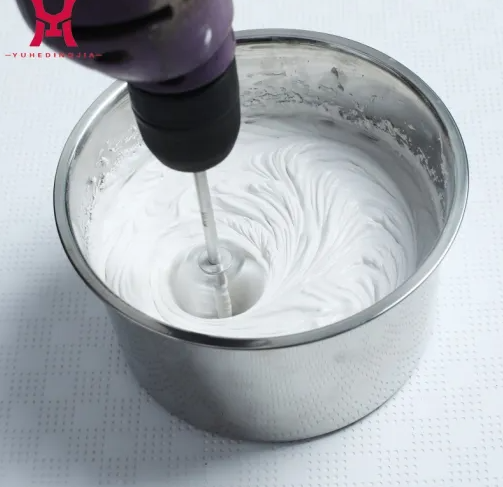What is redispersible polymer powder used for?
What is redispersible polymer powder used for? Redispersible polymer powder, often abbreviated as RDP, serves as a crucial additive in various industries, offering a wide range of applications due to its unique properties and versatility.
Origins and Composition
Redispersible polymer powder is derived from synthetic polymers such as vinyl acetate ethylene (VAE), acrylics, or styrene butadiene (SB). During the manufacturing process, these polymers are dispersed in water and then spray-dried to form fine powders. The resulting powder particles contain polymer chains that can re-disperse in water, forming a stable emulsion when mixed with other additives and binders.
Applications and Functionalities
The applications of redispersible polymer powder span multiple industries, including construction, adhesives, coatings, and pharmaceuticals. In the construction sector, RDP is commonly used as a vital component of cementitious tile adhesives, mortars, and self-leveling compounds. Its ability to improve adhesive strength, flexibility, and water resistance makes it an indispensable additive in formulations for tile installation, flooring systems, and exterior insulation finishing systems (EIFS).
Advantages and Benefits
The utilization of redispersible polymer powder offers numerous advantages, both in terms of performance and sustainability. By enhancing the mechanical properties and durability of construction materials, RDP helps to prolong the service life of structures, reduce maintenance costs, and minimize environmental impact. Moreover, the use of RDP-based formulations enables manufacturers to achieve superior product consistency, workability, and adhesion, leading to higher customer satisfaction and market competitiveness.
Impact and Future Trends
As the demand for sustainable building materials and environmentally friendly solutions continues to rise, the importance of redispersible polymer powder is expected to grow. Innovations in polymer chemistry and manufacturing processes are driving the development of advanced RDP formulations with enhanced properties such as increased water resistance, improved freeze-thaw stability, and reduced volatile organic compound (VOC) emissions. Additionally, the adoption of RDP in emerging markets and applications, such as 3D printing and biomedical coatings, presents new opportunities for growth and innovation in the polymer industry.
Conclusion
In conclusion, redispersible polymer powder represents a versatile and indispensable additive with diverse applications across multiple industries. From enhancing the performance of construction materials to enabling breakthroughs in adhesives, coatings, and pharmaceutical formulations, RDP plays a vital role in driving innovation, sustainability, and value creation. By understanding the origins, functionalities, and benefits of redispersible polymer powder, stakeholders can leverage its unique properties to develop innovative products, improve manufacturing processes, and address evolving market demands.
- Previous: None
- Next: None


